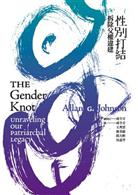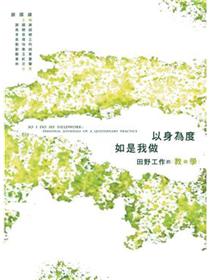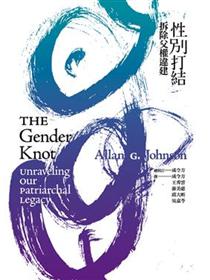章節試閱
Unit 5 犯罪偵查 Criminal Investigation
│課文介紹│
犯罪現場常被故布疑陣,稱之為staged crime scene,偵查人員做後續調查及偵監時,常會出列出待辦事項表(To-Do List),並利用各種犯罪分析(犯罪報告、犯罪繪圖、犯罪統計、逮捕報告、報警電話、地理分析)、線民、指認(排列指認、相片指認,及當面指認)、臥底及偵訊等技巧。臥底與誘陷、自白與自認、訪談與偵訊常常是一線之隔,基本上,偵查人員對嫌犯進行的是 interrogation(訊問),但對被害人或證人進行的是interview(訪談)。
在搜索、扣押、逮捕方面,憲法保障人民免於受到執法機關不合理的搜索及扣押,執法人員進行的搜索大分為有票搜索與無票搜索,搜索情況有緊急搜索、急迫搜索、清查搜身、保護性搜索(也稱為附帶搜索)。
移送一詞在英文中,可以用booking process來表示,因為在這個程序中。包括拍嫌犯照片及捺印指紋等,這些移送前的警察程序,在美國稱為booking。
Crime Scene 犯罪現場
When the police respond to a citizen’s report and learn that a crime has beencommitted, a preliminary investigation will be initiated. Normally, preliminary investigation is conducted by a uniformed officer from the patrol division; the followup investigation is conducted after the initial incident report is completed until the case is ready for prosecution. To facilitate a successful case closure, such investigations are usually referred to the CID. Detectives are constantly requested to provide investigative assistance and conduct surveillances because they are familiar with the investigative techniques, information sources and databases that are available to them.
當警方前往回應民眾報案,並得知有犯罪發生時,初步偵查就會展開。正常而言,初步偵查是由巡邏組的制服員警進行;後續調查是在初步事件報告完成後,一直到案件準備要起訴的這段期間進行,為了便於成功結案,這些偵查通常被移給刑警隊。偵查員常被請求提供偵查協助及進行偵查,因為他們熟悉那些用得到的偵查技巧、資訊管道及資料庫。
Criminal stages a crime scene to misdirect investigators so as to get away with the crime. For instance, a man strikes another person, leaves her body at the bottom of the stairs, and calls the police. Then he claims that the person fell while walking down the stairs. A killer stages a crime scene by breaking a window to make it look like a burglar killed the victim. A wife spikes a drink with poison and serves the drink to her husband. Then she forges a suicide note to make the murder look like a suicide. A jewelry store owner, with the intent of defrauding an insurance company, stages a burglary in which a diamond necklace is missing, and a glass window had been broken. He is well aware that the jewelry is fully insured. The offender starts a fire in an effort to cover up another crime, and the offender mistakenly believes that the fire will burn up evidence of the crime. These are examples of staged crime scene. And unless they are caught red-handed, the alleged persons mostly tend to give false alibi to the police to cover up their crimes. To urge people to tip off police about crime, police will set up an anonymous tip line for people to give a clue.
罪犯會假造一個犯罪現場來誤導偵查人員,以逃避犯罪,例如,一名男子踹了另一個人、把屍體留在樓梯下方,並打電話給警察,然後他聲稱這個人是在走下樓梯時跌倒的;殺手假造一個犯罪現場,藉由將窗戶打破,使得看起來像是入侵者殺了被害人;妻子將毒藥攙入飲料,並端給她丈夫喝,然後偽造自殺字條,讓這起謀殺看起來像是自殺;珠寶店老闆意圖詐騙保險公司,假造有一個竊盜案,而有一條鑽石項鍊因此不見,並且有一片玻璃窗被打破,他深知珠寶全都有保險;犯罪者放了一把火,想要掩蓋另一項犯罪,犯罪者誤認為,這場火災會將犯罪證據燒掉。這些都是假造犯罪現場的例子,而除非他們被當場逮到,否則這些涉嫌人大都會給警方假的不在場證明,來掩蓋他們的犯罪。為了呼籲民眾向警方通報犯罪,警方會設置匿名報案專線,讓民眾提供線索。
Seasoned detectives usually have their own To-Do List for follow-up investigation and surveillance, which may include: (1) to obtain any documentary evidence, for example, bank statements, hotel records, telephone calls, credit card charges, credit histories, revenue and tax records, medical records, and fingerprint record; (2) to check the criminal histories, immigration record, and family background; (3) to visit the crime scene; (4) to review incident report, autopsy report, crime lab report, information and evidence previously obtained; (5) to link suspects to other crimes by modus operandi (M.O.) analysis; (6) to examine the physical evidence; (7) to contact victims and witnesses for in-depth interviews; (8) to search for other witnesses; (9) to execute search warrants; (10) to assess the credibility of witness, (11) to arrange line-ups to identify the suspect; (12) to re-evaluate the case as new information is received; (13) to identify and interview known associates of the suspect and informant; (14) to conduct interrogation and search; (15) to use specialized investigative technologies for example polygraph examination; (16) to locate and apprehend the suspect; (17) to recover stolen property; (18) to meet with the prosecutors, and (19) to maintain a comprehensive case file.
幹練的偵查員通常有他們自己的待辦事項表,做後續調查及偵監,包括:(1)取得文書證據,例如銀行往來明細、飯店紀錄、電話發話、信用卡收費、信用紀錄、年所得及繳稅紀錄、醫療紀錄及指紋紀錄;(2)清查犯罪紀錄、移民紀錄及家庭背景;(3)查看犯罪現場;(4)閱覽先前取得的事件報告、驗屍報告、實驗室報告、資訊及證據;(5)透過犯罪手法的分析,將罪犯與其他犯罪做連結;(6)檢視物證;(7)聯絡被害人及證人,以便做深入訪談;(8)尋找其他證人;(9)執行搜索票;(10)評估證人的可信度;(11)安排指認嫌犯;(12)收到新資訊時,對案件重新評估;(13)確認並訪談已知的嫌犯同夥及線民;(14)進行偵訊及搜索;(15)使用專業偵查技巧,例如測謊鑑定;(16)找到並逮捕嫌犯;(17)起出贓物;(18)與檢察官會晤,及(19)維護卷宗的完整。
Crime analysis 犯罪分析
Crime analysis is the process of using systematic analytical methods to acquire information on crime patterns and trends. The primary goal of crime analysis is to help law enforcement agencies interpret information, effectively deploy resources, and come up with solutions to crime and crime prevention strategies. Crime analysts use crime reports, crime mappings, crime statistics, arrest reports, police calls, geo graphic data, and other resources to identify emerging patterns and trends.
犯罪分析,是以系統分析方法來取得犯罪模式及趨勢資訊的過程,犯罪分析的首要目標,是協助執法機關解讀資訊、有效地部署資源,及提出解決犯罪與預防犯罪的策略。犯罪分析人員使用犯罪報告、犯罪繪圖、犯罪統計、逮捕報告、報警電話、地理分析及其他資源,來確認新興的模式及趨勢。
Surveillance is the monitoring of the behavior or activities (black law) with a view to gathering evidence. It is often broken into two types: physical surveillance and technical surveillance. The former is conducted by the surveillance team members on foot or with vehicles; the latter involves the use of various investigative technologies such as CCTV, ALPR, etc.
偵監,是對行為或活動的監控,目的是為了蒐集證據,它通常分為兩種:人的跟監(physical surveillance)及技術偵監(technical surveillance),前者是由偵監小組的人員以徒步或開車的方式進行,後者包括了各種偵查科技的使用,例如閉路監視器、自動車牌辨識系統等等。
Informants supply information to the police about a crime in exchange for a reward, special treatment or favorable consideration on charges pending against them. An informant is also known as confidential informant, criminal informant, informer or cooperating individual. While the information provided will likely lead to the apprehension of a criminal suspect, seizure of illegal goods and recovery of stolen property, investigator should always confirm the source of information and be careful not to be lured into a trap.
線民提供有關犯罪的資訊給警方,以換取報酬、特殊待遇,或對其未結的被告案件之有利考量。線民(informant)也稱confidential informant、criminal informant、informer或cooperating individual,由於提供的資訊可能導致嫌犯逮捕、非法物品的查扣及失竊物的尋獲,因此,偵查人員都應該要確認資訊的來源,並小心不被引入陷阱。
Eyewitnesses, Lineups, Photo lineups, and Show-ups
目擊證人、排列指認、相片指認,及當面指認
Eyewitnesses may be requested to see if they recognize anyone connected with the crime in one of three procedures: a lineup, photo lineup, or show-up. Re searches indicate that eyewitness testimony is the most unreliable form of evidence and may cause more miscarriages of justice than any other method of proof. Mistaken identifications may lead to the arrest of innocent persons.
目擊證人可能會被要求從排列指認、相片指認或當面指認這三種程序之一,去看看他們是否認得與犯罪有關的人。研究指出,目擊證人的證詞是最不可靠的證據形式,甚至比其他的證明方法更會造成司法誤判,錯誤的指認會導致無辜者被逮捕。
Lineup is the police identification procedure in which a criminal suspect and other physically similar persons are shown to the victim or witness to determine whether the suspect is the perpetrator of the crime. In the lineup process, the victim or witness will be brought into the lineup room, which has one-way glass. However, the victims or witnesses are not obliged to identify anyone. In addition to physical lineup, investigators may decide to use photo lineup, in which a series of photographs are shown to the victim or witness. A photo lineup consists of several photographs of the same quality, size, shape, and type of individuals who are similar in appearance, for example, sex, age, skin, hair color, height, build, and other characteristics. Show-up is the identification procedure in which a suspect is confronted with a witness to or the victim of a crime. Unlike a lineup, show-up is a one-oneone confrontation.
排列指認是警方的確認程序,該程序中,嫌犯及其他身材相似的人被顯示給被害人或證人看,以確認嫌犯是不是犯罪的行兇者。在排列指認的程序中,被害人或證人會被帶到有單面玻璃的指認室,然而,被害人或證人沒有義務得要指認任何人。除了人身指認之外,偵查人員可能會決定使用相片指認,將一排相片展示給被害人或證人看,相片指認包括數張相同品質、大小、形狀及種類的人像照,這些人的外表相似,例如性別、年齡、膚色、髮色、身高、體型及其他特徵。當面指認是讓嫌犯面對證人或犯罪被害人的確認程序,與排列指認不同的是,當面指認是一對一的對質。
Undercover and Entrapment 臥底與誘陷
Undercover work has been used in a variety of investigation. Officers who work undercover are called undercover agents, undercover police officer, or undercover operatives. Roping is another important technique for undercover agent. It is the art of gaining a suspect’s confidence and willingness to reveal his prior, current or planned criminal acts to the undercover agent. Undercover operation is often described by the media as sting operation, because in their point of view, it is an operation designed to catch a person committing a crime by means of deception. The word sting derives its origin from American usage to mean the police set a trap to catch a crook.
臥底工作被用在各種偵查,從事臥底工作的幹員稱為undercover agent、 undercover police officer或or undercover operatives。套話是臥底幹員的另一項重要技能,那是一門取得嫌犯信賴而願意將他以前、目前或已計畫的犯罪行為透露給臥底幹員的藝術。臥底行動通常被媒體形容為設局行動(sting operation),因為在他們的觀點,臥底是一項以欺騙的方式設計用來捕抓犯罪者的行動,sting一字源於美式用法,意指警察設陷阱抓壞蛋。
Sting operation is a common but controversial technique because the undercover officer might act as a drug dealer or even trafficker and participate in the crime. Such operations are frequently used to catch prostitutes on city streets. Another type of sting operation involves the undercover agent leaves a car unattended in a high crime area, with the door unlocked, and then round up the suspect while he is committing the car theft. It should be noted that the officer cannot solicit the potential target to commit the crimes. Instead, they wait for someone else to solicit. Otherwise, this would qualify as entrapment.
設局行動是一項普通但有爭議的技巧,因為臥底幹員可能會扮演交易者或甚至走私者的角色,並參與犯罪,這種行動常被用來追捕街上的娼妓。另一種設局行動涉及的是,臥底幹員把車子留在高犯罪地區,讓車門沒上鎖,然後等嫌犯進行竊車時圍捕他。應注意的是,員警不可以邀約潛在的目標來犯罪,而是等別人來邀約,否則這會符合誘陷。
Entrapment can be explained as the conduct to induce the suspect to commit an offense that the person would ordinarily have no propensity to do. From the defendant’s perspective, entrapment is a common defense against a charge resulting from a sting operation. The defendant would claim that he or she was coerced into illegal activity by police officers. Although entrapment is not a crime, it is sometimes considered unethical.
誘陷可以被解釋為,引誘嫌犯從事一個他原本沒有傾向會做的犯罪,從被告的角度,誘陷是一項常見的抗辯理由,用來防禦設局行動導致的控告,被告會主張他是被員警強制而從事違法活動,雖然誘陷不是犯罪,但有時被認為是不道德的。
Admission and Confession 自認與自白
Although people may confess to a crime, a conviction cannot be based solely on a confession. There must be other corroborating evidences to support the conviction. In other words, confession can be a piece of corroborative evidence and not as the sole evidence.
雖然人會自白犯罪,但有罪判決不能只依據自白,必須要有旁證來支持有罪判決。換言之,自白可以是一項旁證,但不是唯一證據。
A false confession is an admission of guilt. False confession may result in false arrest and false imprisonment. Contrary to the widespread belief that people do not confess to crimes they did not commit, history reveals that many innocent people were wrongfully prosecuted, convicted, imprisoned and sometimes sentenced to death on the basis of false confession.
不實的自白是有罪的自認,不實的自白會導致錯誤的逮捕及錯誤的監禁。一般認為,人們不會承認自己沒犯的罪,與此相反的是,歷史顯示,許多無辜的人被依據不實自白,而受到不當起訴、定罪、監禁,有時被判死刑。
Confessions have been proved false in a number of situations, such as when it is discovered that the confessed crime was not committed; when new evidence shows it was physically impossible for the confessor to have committed the crime; when the real perpetrator is captured; and when DNA and other scientific evidence affirmatively establishes the confessor’s innocence. False confession may be voluntary. Voluntary false confessions are those in which people claim responsibility for crimes they did not commit without prompting or pressure from police. There are several reasons why innocent people might volunteer confessions, for example a pathological need for attention or self-punishment; feeling of guilt or delusions; or the desire to protect a parent, child or someone else. Undoubtedly, false confession may also be involuntary. An involuntary confession is one extracted by any sort of threats. It is a forced confession obtained under means of torture, enhanced interrogation technique or duress.
自白在許多情況中,被證實是不實在的,例如,自白的犯罪後來發現並未發生;新證據顯示自白者根本不可能犯下該罪;真正的行兇者被捕;以及DNA與其他科學證據確定證實自白者的無辜。不實的自白可能會是自願的,自願的不實自白,是指那些沒有警方的促使或壓力下,對沒從事的犯罪承認有犯罪責任的自白。何以無辜者會自願自白,其原因有幾項,例如病態性需要關注或自我懲罰;罪惡感或錯覺;或想保護父母、小孩或其他某人。無疑地,不實自白也可能會是非自願的,非自願的自白是一個以各種威脅所取得的自白,那是一種在凌虐、拷問或脅迫的手段之下,所取得的強迫性自白。
Extended interrogation techniques add stress and fatigue to the questioning, for example, questioning of 20 hours per day in many consecutive days. A confession is inadmissible as involuntary if it is extracted by any sort of coercion, threating, physical restraint or violence, or extended interrogation.
疲勞訊問是將壓迫及疲勞加在問訊中,例如,連續數天每天問訊20小時。白自如果是用強制、威脅、強暴或疲勞訊問的方式,則屬於非自願性而無證據能力。
In early 20 century, officers might extract a confession by using enhanced interrogation, extended interrogation, or inappropriate methods such as violence, coercion, waterboarding, or depriving suspects of food, water and sleep. Nowadays, these interrogation methods are no longer acceptable. Detectives have to develop new ways of drawing confessions out of suspects, e.g. psychological techniques. But it is not unlawful that interrogators tell them about all the possible terrible penalties they will face if they are to be charged.
在20世紀初期,員警取得自白,可能會用拷問、疲勞訊問或不當的方法,例如暴力、脅迫、灌水或剝奪食物、飲水或睡眠。現今,這些訊問方式已經不再是可以接受的,偵查員必須發展新的方法從嫌犯獲取自白,例如心理技巧,但訊問人告訴他們關於如果被控告之後會面臨可能的可怕處罰,並非不合法。
以上內容節錄自《實用執法英文》柯慶忠◎著.白象文化出版
更多精彩內容請見
http://www.pressstore.com.tw/freereading/9789863580799.pdf
Unit 5 犯罪偵查 Criminal Investigation
│課文介紹│
犯罪現場常被故布疑陣,稱之為staged crime scene,偵查人員做後續調查及偵監時,常會出列出待辦事項表(To-Do List),並利用各種犯罪分析(犯罪報告、犯罪繪圖、犯罪統計、逮捕報告、報警電話、地理分析)、線民、指認(排列指認、相片指認,及當面指認)、臥底及偵訊等技巧。臥底與誘陷、自白與自認、訪談與偵訊常常是一線之隔,基本上,偵查人員對嫌犯進行的是 interrogation(訊問),但對被害人或證人進行的是interview(訪談)。
在搜索、扣押、逮捕方面,憲法保障人民免於受到執法...
作者序
每一項職業都有其特別用語,執法人員亦不例外。執法者使用之詞彙有其較為慣有的組合,如能多加熟悉及練習,應能貼近英語系國家之表達方式。
依筆者經驗,我國執法人員對執法英語之需求,除於實際執法時之應用外,更大的需求常常在於出國參訪、開會、受訓、進修及擔任駐外聯絡官時,與外國人士能彼此通情達意。有鑑於此,本書廣泛蒐集美國執法常用詞彙,從外國文獻摘取相對我國制度之用語,依據實務主題編排實用內容。有關國內的機關、制度及法律英譯資料則未引用,以免重覆;文法與修詞方面,敬請讀者參閱其他專業書籍。
從1991年中央警察大學畢業至2011年轉任一般行政部門,實際從事警察工作共二十載,尤其在刑事警察局國際刑警科任職12年、派駐華府擔任首任駐美警察聯絡官3年,同時得在政大法律研究所、喬治華盛頓大學法學院(George Washington University, LLM)及美國聯邦調查局國家學院(FBI National Academy)進修與受訓,讓筆者得有許多跨國實務歷練、有機會與我國警界實務領域頂尖人才共事,得與美國司法及警政人士進行理論與實務的結合,彙整而有本書之編排。誠然,個人才疏學淺,圖以極短的篇幅涵蓋廣泛而專業的執法領域,致內容疏漏、錯誤及不周之處,尚祈讀者先進包涵與指正。
有幸曾任三線一星職務,感謝母校中央警察大學、警政署及刑事警察局,感謝前警政署長侯友宜先生的提攜,謹以此書,試著為自己擔任警察的二十年留下足跡,曾經,我在這個地方,想過這麼一件事。
柯慶忠
2014年10月 於台灣淡水
每一項職業都有其特別用語,執法人員亦不例外。執法者使用之詞彙有其較為慣有的組合,如能多加熟悉及練習,應能貼近英語系國家之表達方式。
依筆者經驗,我國執法人員對執法英語之需求,除於實際執法時之應用外,更大的需求常常在於出國參訪、開會、受訓、進修及擔任駐外聯絡官時,與外國人士能彼此通情達意。有鑑於此,本書廣泛蒐集美國執法常用詞彙,從外國文獻摘取相對我國制度之用語,依據實務主題編排實用內容。有關國內的機關、制度及法律英譯資料則未引用,以免重覆;文法與修詞方面,敬請讀者參閱其他專業書籍。
從1991年中央警...
目錄
01. 執法倫理與行為準則Law Enforcement Code of Ethics and Conducts
02. 組織、訓練與裝備 Organization, Training and Equipment
03. 犯罪與刑法 Crime and Criminal Law
04. 法院與刑事訴訟 Court and Criminal Procedure
05. 犯罪偵查 Criminal Investigation
06. 偵查科技 Investigative Technologies
07. 鑑識科學 Forensic Science
08. 證據規則 Rule of Evidence
09. 巡邏 Patrol
10. 幫派暴力及組織犯罪Gangs Violence and Organized Crimes
11. 家庭事件 Family Issues
12. 示威、街頭抗議及武力使用Demonstration, Street Protest and Use of Force
13. 交通執法 Traffic Enforcement
14. 火災及應急管理 Fire and Emergency Management
15. 矯正 Corrections
16. 移民 Immigration
17. 國際刑事合作International Cooperation in Penal Matters
18. 國際警察合作International Police Cooperation
01. 執法倫理與行為準則Law Enforcement Code of Ethics and Conducts
02. 組織、訓練與裝備 Organization, Training and Equipment
03. 犯罪與刑法 Crime and Criminal Law
04. 法院與刑事訴訟 Court and Criminal Procedure
05. 犯罪偵查 Criminal Investigation
06. 偵查科技 Investigative Technologies
07. 鑑識科學 Forensic Science
08. 證據規則 Rule of Evidence
09. 巡邏 Patrol
10. 幫派暴力及組織犯罪Gangs Violence and Organized Crimes
11. 家庭事件 Family Issues
12. 示威、街頭抗議及武力使用Demonstration,...









































































































